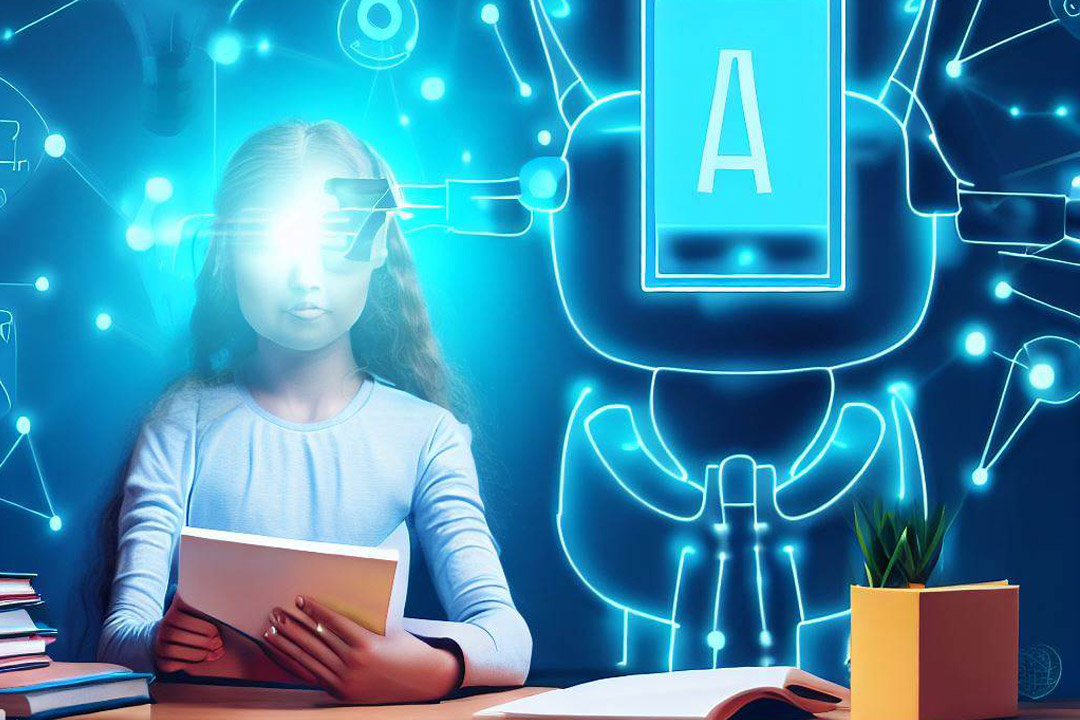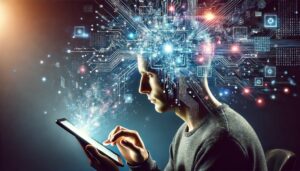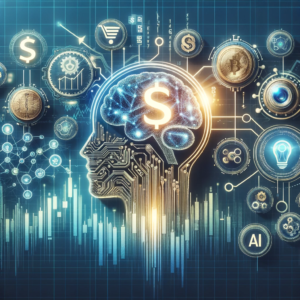The Rise of AI Classrooms in China
In the AI Classroom of a primary school located a few hours outside of Shanghai, teachers are utilizing cutting-edge technology to revolutionize the way students learn. The introduction of AI Classroom technology has enabled educators to monitor student attention levels and engagement in real-time, providing valuable insights into each student’s performance.
The school has implemented the use of brain wave sensing gadgets, which students wear during class as part of the AI Classroom setup. These devices, made in China, feature three electrodes – two behind the ears and one on the forehead – that pick up electrical signals sent by neurons in the brain. The neural data is then transmitted to the teacher’s computer, allowing them to quickly identify which students are paying attention and which ones are struggling to focus, thus maximizing the potential of the AI Classroom.
The AI Classroom system generates detailed reports that show how well the class is paying attention, even breaking down each student’s concentration level at 10-minute intervals. These reports are then shared with parents via a chat group, keeping them informed about their child’s progress and engagement in the classroom.
While the effectiveness and accuracy of these devices have been questioned by some experts, teachers at the school have reported positive results. They claim that the AI Classroom technology has encouraged students to become more disciplined and focused during lessons, leading to improved study habits and higher academic scores.
We strongly recommend that you check out our guide on how to take advantage of AI in today’s passive income economy.
Table of Contents
The Potential Risks and Concerns
Despite the potential benefits of AI Classroom technology, there are concerns about the privacy and pressure it may place on students. Some students have expressed discomfort with the constant monitoring, and parents have reported punishing their children for low attention scores.
Theodore Zanto, a neural scientist at the University of California San Francisco, expressed surprise at the use of electroencephalography (EEG) technology in classrooms, as it is typically used by doctors in hospitals and labs. He cautioned that EEG is susceptible to artifacts, and factors such as fidgeting or improper electrode contact can affect the signal.
Furthermore, the lack of clarity surrounding data privacy has raised concerns among experts and citizens alike. Companies involved in the development of AI Classroom technology have stated that the collected data can be used in government-funded research projects, but parents seem to be unaware of where the data ultimately ends up.
The Future of Education in China
China’s Ambitious Plans for AI Integration
China has ambitious plans to become a global leader in artificial intelligence, and the education sector is no exception. The government has invested billions of dollars into AI Classroom projects, bringing together tech giants, start-ups, and schools to develop and implement innovative solutions.
Beyond the use of brain wave sensing gadgets, some schools in China are experimenting with other AI-driven technologies. Classrooms are being equipped with robots that analyze students’ health and engagement levels, while students wear uniforms with chips that track their locations. Surveillance cameras are even being used to monitor how often students check their phones or yawn during classes.
These advancements in AI Classroom technology have sparked a mixture of excitement and concern among Chinese netizens. While some see the potential for improved educational outcomes, others worry about the implications for privacy and the pressure placed on young students.
The Need for Responsible Implementation
As China continues to push forward with its AI Classroom initiatives, it is crucial that the implementation of these technologies is carried out responsibly. Educators, policymakers, and technology developers must work together to ensure that the benefits of AI in the classroom are maximized while minimizing potential risks and negative consequences.
This includes establishing clear guidelines for data privacy and protection, ensuring that students and parents are fully informed about how their data is being collected and used. It also means providing adequate support and resources for teachers to effectively integrate AI Classroom technology into their teaching practices, without placing undue pressure on students.
Moreover, it is essential to recognize that AI Classroom technology should be used as a tool to enhance and support traditional teaching methods, rather than a replacement for human interaction and guidance. The role of teachers in providing personalized attention, fostering critical thinking skills, and nurturing students’ social and emotional development cannot be understated.
Conclusion
China’s rapid adoption of AI Classroom technology offers a glimpse into the future of education, where advanced algorithms and real-time data analytics are used to optimize student learning and performance. While these innovations have the potential to revolutionize the way we teach and learn, it is important to approach their implementation with caution and careful consideration.
As these AI Classroom laboratories shape the minds of future generations, it is crucial that we strike a balance between embracing the benefits of technology and preserving the fundamental human elements of education. Only then can we ensure that China’s bold experiment in AI-assisted learning truly serves the best interests of its students and society as a whole.
FAQ: AI in Education
What questions to ask about AI in education?
- How can AI be integrated into existing educational curricula?
- What are the potential benefits and drawbacks of using AI in the classroom?
- How can AI help personalize learning experiences for individual students?
- What are the ethical considerations surrounding the use of AI in education?
- How can educators and administrators ensure that AI is being used responsibly and effectively?
How AI could be used in classrooms?
- Personalized learning: AI can analyze student data to create customized learning paths and provide targeted support.
- Intelligent tutoring systems: AI-powered tutoring systems can provide immediate feedback and guidance to students.
- Automated grading: AI can be used to grade assignments and assessments, saving teachers time and providing faster feedback to students.
- Predictive analytics: AI can analyze student data to identify students at risk of falling behind or dropping out, allowing for early intervention.
- Adaptive learning materials: AI can be used to create learning materials that adapt to each student’s needs and abilities.
What questions to ask about AI in a questionnaire?
- Are you familiar with the concept of AI in education?
- Do you believe that AI can improve the quality of education? Why or why not?
- What potential benefits do you see in using AI in the classroom?
- What concerns do you have about the use of AI in education?
- How comfortable would you be with AI being used to personalize your learning experience or grade your assignments?
- Do you think educators and administrators are adequately prepared to implement AI in the classroom?
- What steps do you think should be taken to ensure that AI is used ethically and responsibly in education?
What are the cons of AI in the classroom?
- Privacy concerns: The collection and analysis of student data raises questions about privacy and data security.
- Lack of human interaction: Overreliance on AI could lead to a reduction in face-to-face interaction between students and teachers.
- Bias and fairness: AI systems can perpetuate or amplify existing biases if not properly designed and implemented.
- Technological limitations: AI is not infallible and may make errors or provide inaccurate recommendations.
- Dependence on technology: Students may become overly reliant on AI-powered tools, hindering the development of critical thinking and problem-solving skills.
- Cost and accessibility: Implementing AI in education can be expensive, and not all schools may have equal access to these technologies.
- Resistance to change: Some educators and students may be resistant to the adoption of AI in the classroom, preferring traditional teaching methods.

We strongly recommend that you check out our guide on how to take advantage of AI in today’s passive income economy.




